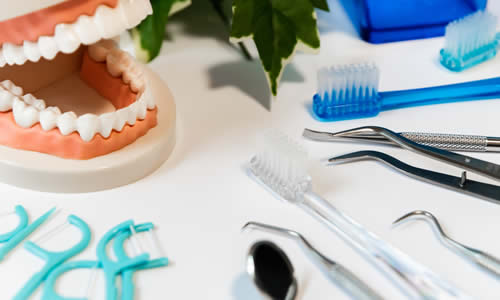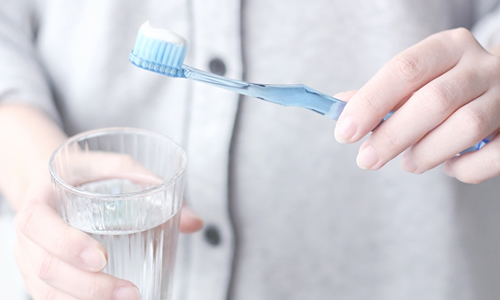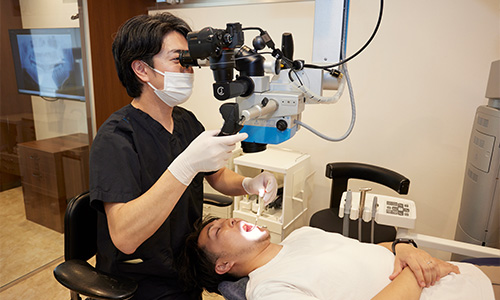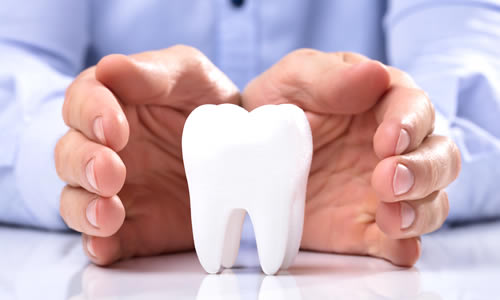Precision Treatment with Minimal Shaving

About Direct Bonding

Direct bonding (aesthetic direct composite resin restoration) is a treatment method where various types of aesthetic restoration plastics are directly applied in the mouth to restore the beautiful color and original shape of natural teeth.
At our clinic, we select and layer multiple types of plastics from about ten different types with varying colors and transparency to match each tooth. This method allows us to recreate natural teeth, which was difficult with conventional insurance-covered treatments. Direct bonding treatment can beautifully repair gaps in front teeth, discolored fillings, and chipped teeth.
Treatment Objectives
The objectives of direct bonding are numerous.
- Fill gaps in front teeth
- Beautify discolored teeth
- Fill chipped teeth beautifully
- Beautify metal fillings with direct bonding
- Minimize the amount of natural tooth shaving
Features of the Treatment
Treatment is completed in one session
The amount of tooth removal is minimized
Metal color is not visible, making it very aesthetic
Gaps in front teeth can be filled
Chipped teeth can be repaired on the same day
Discolored teeth can be repaired on the same day
Advantages/Disadvantages of Direct Bonding
Advantages
Fill gaps in front teeth.
Beautify discolored teeth
Fill chipped teeth beautifully
Beautify metal fillings with direct bonding
Minimize the amount of natural tooth shaving
Treatment is completed in one session
The amount of tooth removal is minimized
Metal color is not visible, making it very aesthetic
Gaps in front teeth can be filled
Chipped teeth can be repaired on the same day
Sometimes superior adhesion compared to other restorations
Disadvantages
Cannot repair large defects
Repair of heavily discolored teeth
Weaker in strength compared to ceramic inlays depending on the location
Equipment Used at Our Clinic
At our clinic, we actively use various latest medical equipment to provide more precise treatment to our patients.
Microscope

Rubber Dam

Others
Micro spatula, brush, short needle, etc.
Until Treatment is Completed
Depending on the case, it takes about one to one and a half hours per tooth.
Basically, rubber dam isolation is performed, and treatment is done under a microscope, so it takes a little longer, but the precision is very high, and the quality is excellent.
About Pain During Treatment
Basically, anesthesia is performed, so there is no pain. Even when administering anesthesia, preliminary anesthesia is performed first, so there is little pain during anesthesia. If you feel pain, additional anesthesia will be administered, so please do not hesitate to let us know.
Cases Where Treatment Cannot Be Performed

There are cases where treatment cannot be performed depending on the situation.
For example, cases with too large defects, heavily discolored teeth, or locations where too much force is applied are not suitable.
Also, repairs in places where instruments are difficult to reach may not be possible.
See detailed cases of direct bonding
Risks Associated with Treatment
There are limitations in reproducing fractures and color tones.
General Dental Treatment
1 Protecting the Patient's Precious Teeth

Thorough consideration to ensure as little pain as possible for the patient
2 To Have a Long Relationship with Your Own Teeth

Professional cleaning to protect your precious teeth, specialized preventive dentistry
3 Precision Treatment with Minimal Shaving

Direct bonding that minimizes shaving and reduces the number of treatment sessions
4 To Prevent Tooth Loss Due to Periodontal Disease

Periodontal treatment to protect the patient's teeth from periodontal disease, which causes tooth loss
5 Aiming to Preserve the Nerve as Much as Possible

To live with your own teeth for as long as possible...
Our clinic considers this in our treatments.